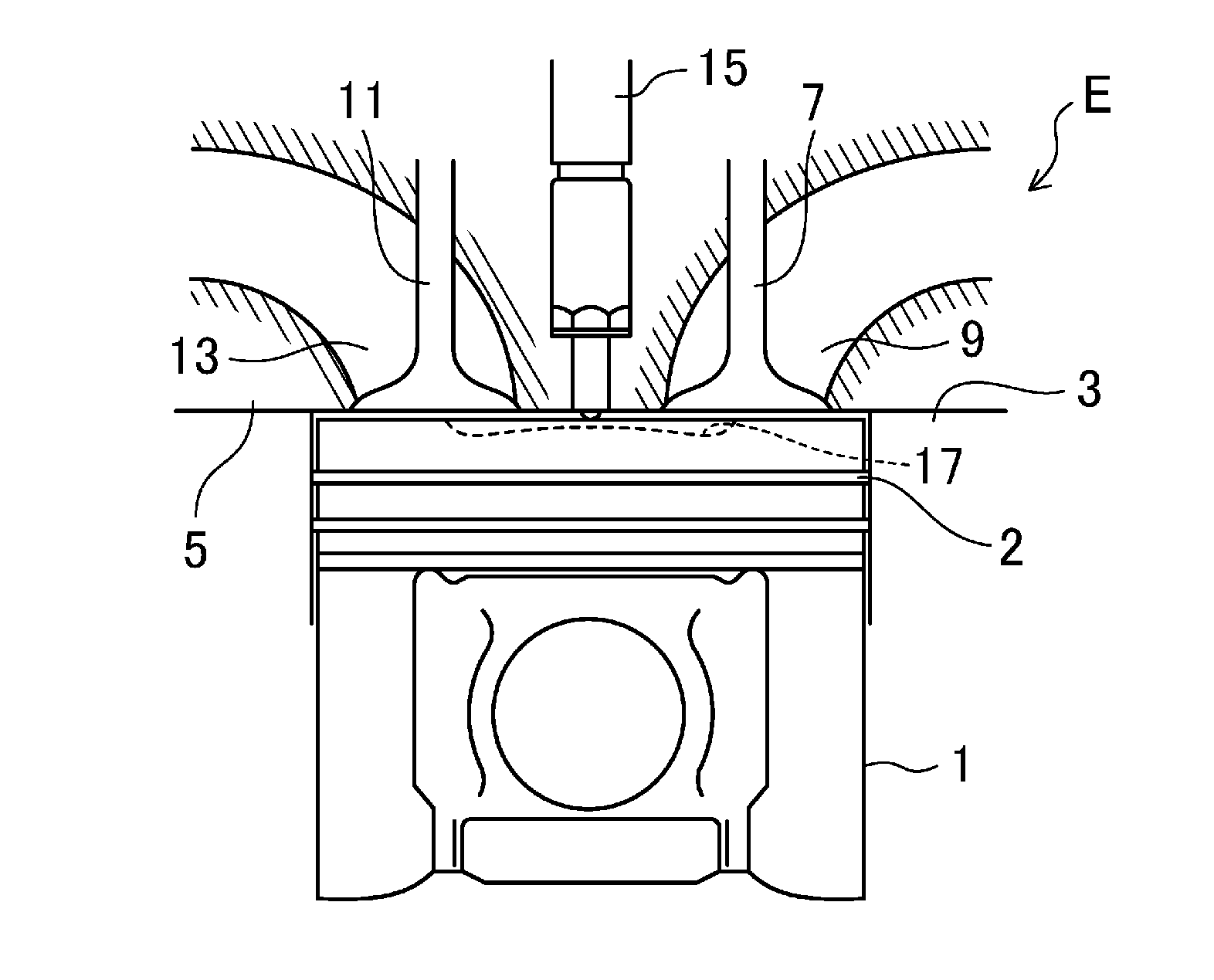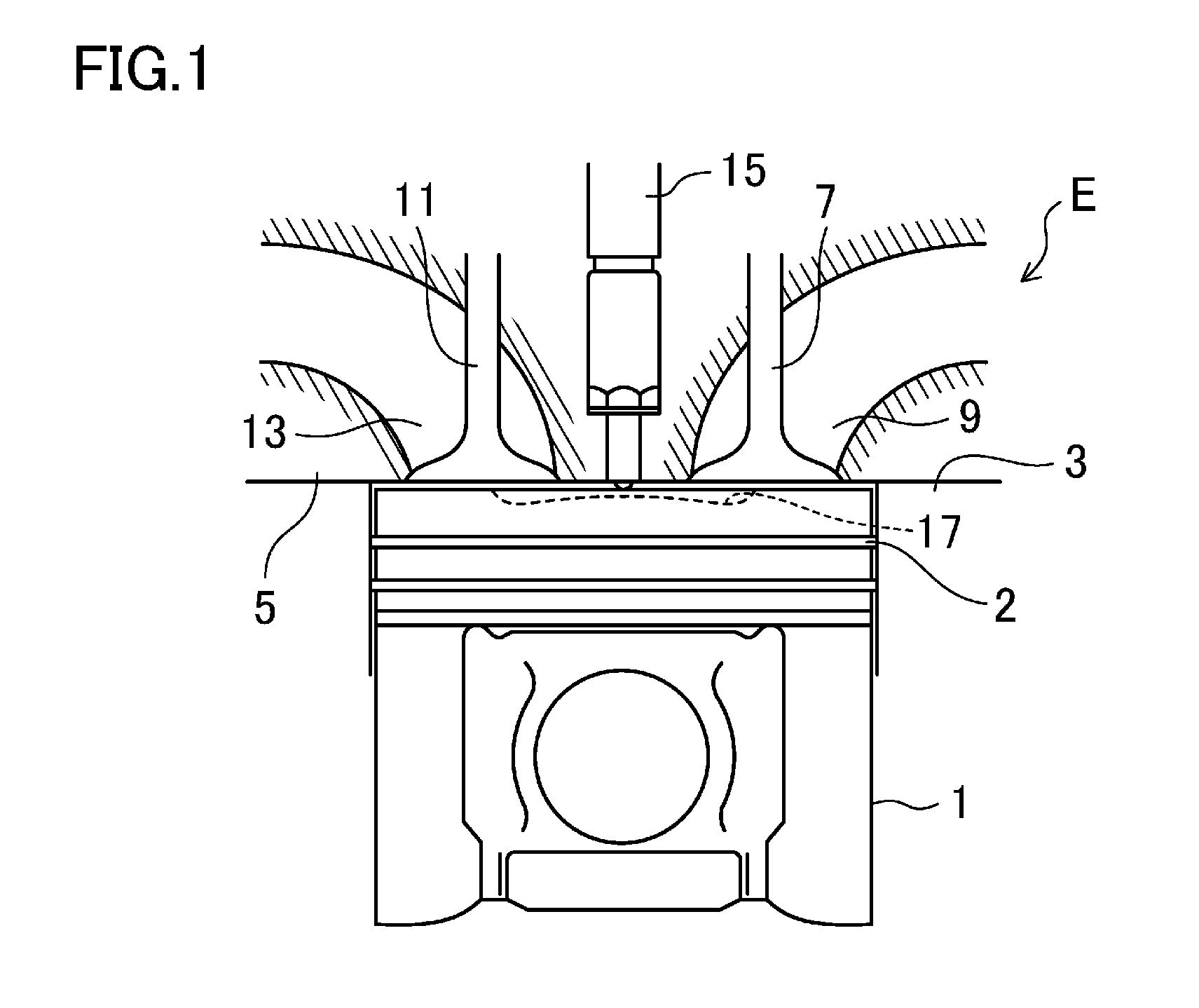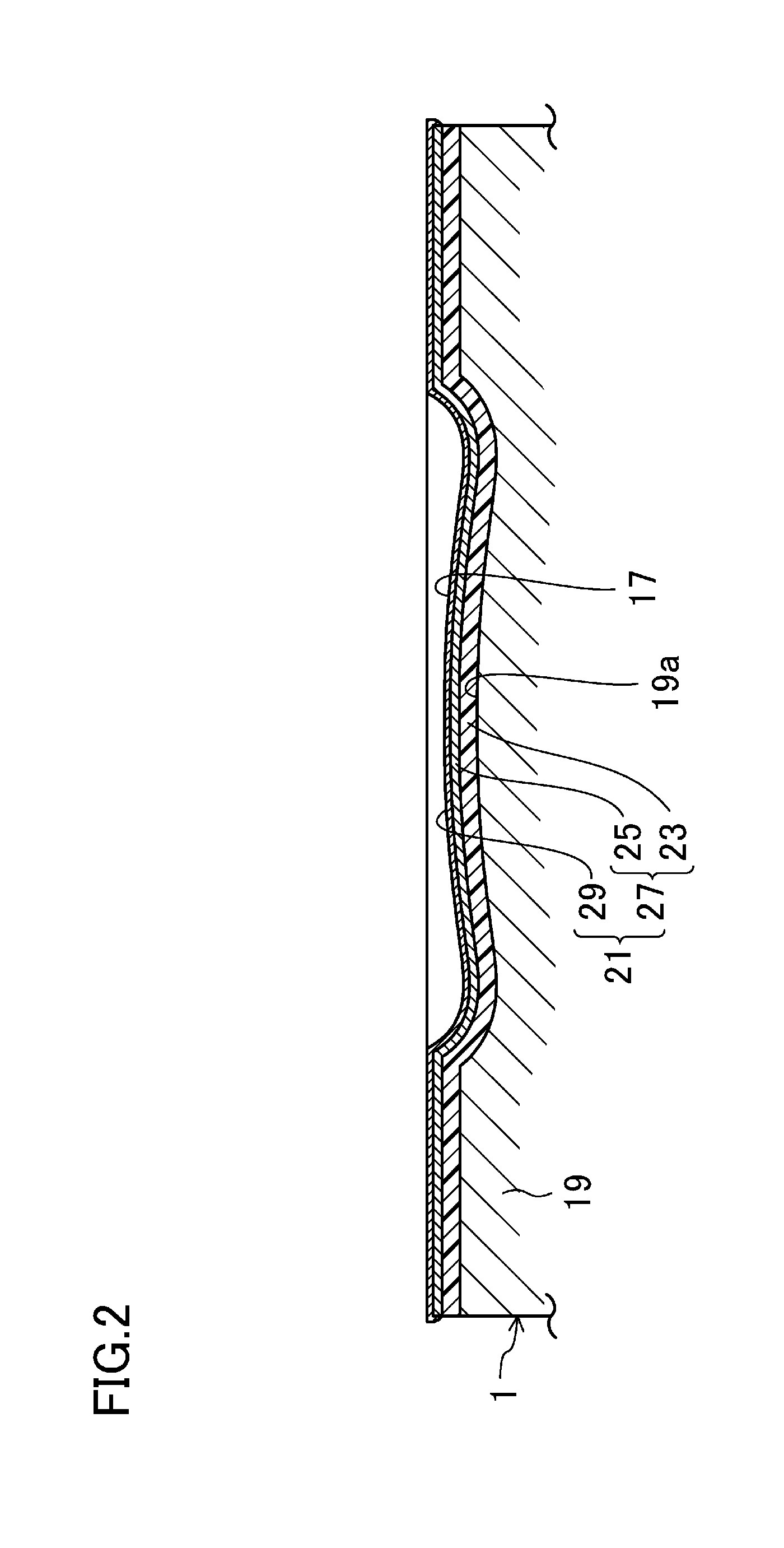Heat-insulating structure of member facing engine combustion chamber, and process for producing same
a technology of heat-insulating structure and engine, which is applied in the direction of machines/engines, mechanical equipment, chemical coatings, etc., can solve the problems of cracks and peeling in the heat-insulating layer, ceramic sintered body has not been put into practical use especially, and the adhesion between particles in the zirconia-based layer is inferior to that of the cermet-based layer, so as to reduce the deformation of the heat-insulating layer and reduce the pre-ign
- Summary
- Abstract
- Description
- Claims
- Application Information
AI Technical Summary
Benefits of technology
Problems solved by technology
Method used
Image
Examples
first embodiment
Heat-Insulating Structure of Engine Member of First Embodiment
[0052]To enhance heat insulation of the engine, a heat-insulating layer 21 is formed on the top face (i.e., the face facing the engine combustion chamber) of a piston body 19 serving as an engine member, as illustrated in FIG. 2. Although not shown, heat-insulating layers similar to those on the top face of the piston 1 are formed on the surfaces of engine members, i.e., the cylinder block 3, the cylinder head 5, the intake valve 7, and the exhaust valve 11, facing the engine combustion chamber.
[0053]The cavity 17 is formed in the center of a top face 19a of the piston body 19. The heat-insulating layer 21 includes a heat-insulating film 27 as a heat-insulating layer body and a plating film 29 covering the entire surface of the heat-insulating film 27. The heat-insulating film 27 includes a base layer 23 having a low thermal conduction and covering the entire top face 19a of the piston body 19 and a surface layer 25 havin...
second embodiment
Heat-insulating Structure of Engine Combustion Chamber of Second Embodiment
[0077]Similarly to the first embodiment, in a heat-insulating structure of an engine combustion chamber according to a second embodiment, a heat-insulating layer is formed on, for example, the top face of a piston serving as a member constituting the engine combustion chamber. A specific example of this heat-insulating structure will be described with reference to FIG. 5.
[0078]As illustrated in FIG. 5, a heat-insulating layer 43 including a silicone-based resin composition is formed on the top face of a piston 1 constituting an engine combustion chamber and on a part of the outer peripheral surface of the piston 1 closer to the top face than a piston ring groove 41. The heat-insulating layer 43 includes hollow particles 31 in order to reduce thermal conductivity thereof, and also includes a plating film (not shown) in the surface thereof. The presence of such a heat-insulating layer 43 can reduce a cooling lo...
example 1
[0100]First, 12.8 g of tetramethyldisiloxane, 150 g of toluene, and 10 g of methanol were placed in a 3-neck glass flask provided with a stirrer and a thermometer and were mixed together. The resulting mixture solution was cooled to 5° C., and while the mixture solution was being stirred, 17.4 g of 69% nitric acid was dropped into the mixture solution in small portions. Thereafter, the mixture solution was returned to room temperature, and while the mixture solution was being stirred, a solution in which 50.0 g of a cage silicate compound (tetramethyl ammonium-T8-silsesquioxane: SI06696.9 produced by GELEST, inc.) was dissolved in 50.0 g of methanol was dropped for one hour. The mixture solution was stirred for four hours at room temperature, and then an aqueous layer was separated, and an organic layer was washed three times with 100 g of water. Then, the organic layer was subjected to evaporation to dryness, thereby obtaining white crystal of a compound expressed as formula 6. In ...
PUM
| Property | Measurement | Unit |
|---|---|---|
| temperature | aaaaa | aaaaa |
| temperature | aaaaa | aaaaa |
| particle size | aaaaa | aaaaa |
Abstract
Description
Claims
Application Information
 Login to View More
Login to View More - R&D
- Intellectual Property
- Life Sciences
- Materials
- Tech Scout
- Unparalleled Data Quality
- Higher Quality Content
- 60% Fewer Hallucinations
Browse by: Latest US Patents, China's latest patents, Technical Efficacy Thesaurus, Application Domain, Technology Topic, Popular Technical Reports.
© 2025 PatSnap. All rights reserved.Legal|Privacy policy|Modern Slavery Act Transparency Statement|Sitemap|About US| Contact US: help@patsnap.com



